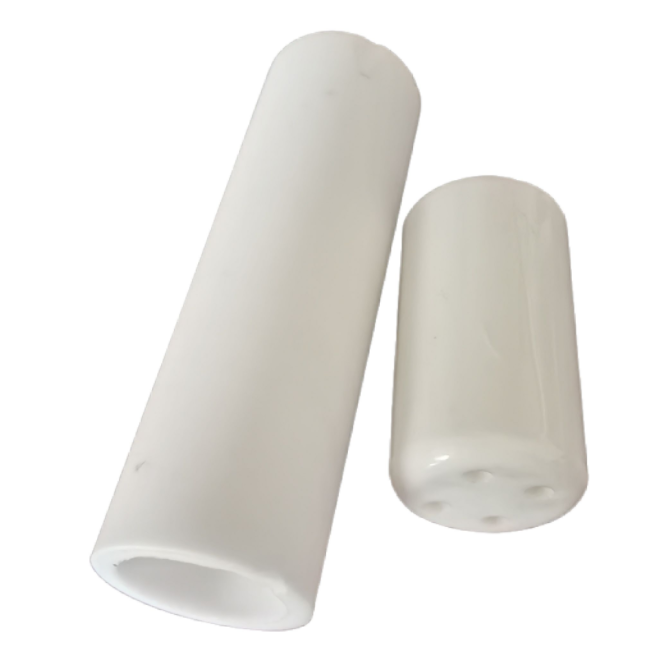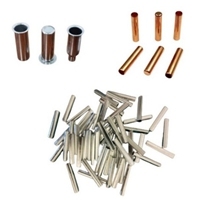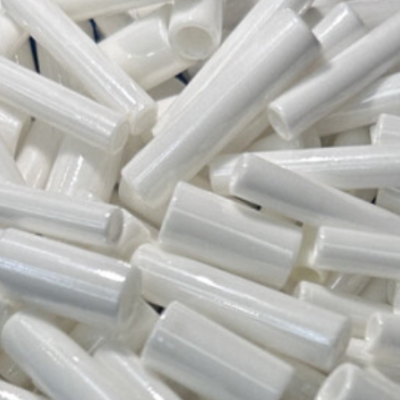As technology moves toward smaller, faster, and smarter devices, the design of thermal sensor housing is evolving to meet new industrial and consumer demands. Thermal sensors are becoming essential across industries—from electric vehicles and smart home appliances to industrial automation and medical equipment. Yet, while sensor accuracy and response speed often take center stage, the housing that protects these sensitive components is just as vital.
Let’s take a closer look at how miniaturization and smart integration are reshaping the future of thermal sensor housing—and what these trends mean for manufacturers, designers, and engineers.
1. Why Thermal Sensor Housing Matters
A thermal sensor housing is more than a mechanical shell. It’s a precision-engineered structure that ensures the sensor’s accuracy, durability, and performance in challenging environments. It protects the sensing element from moisture, dust, and corrosion while allowing efficient heat transfer for accurate temperature readings.
The materials used—such as stainless steel, brass, aluminum, and high-temperature-resistant plastics—are selected based on factors like conductivity, corrosion resistance, and installation conditions. In automotive, HVAC, and energy systems, the right housing design can directly affect how well a sensor performs and how long it lasts.
2. The Push Toward Miniaturization
Miniaturization is one of the most visible trends shaping thermal sensor housing development today. As electronic systems become smaller and more compact, the supporting components must also shrink—without losing functionality or reliability.
Modern designs now emphasize:
- Compact form factors: Reduced footprint allows thermal sensors to fit into smaller spaces, particularly in portable medical devices and compact control modules.
- High precision machining: Advanced CNC techniques enable tight tolerances and consistent dimensions, even at sub-millimeter scales.
- Lightweight materials: Aluminum and high-performance polymers help maintain structural strength while reducing overall weight.
The challenge lies in maintaining excellent thermal conductivity in a smaller space. Manufacturers are increasingly exploring new alloys and composite structures to balance conductivity, insulation, and mechanical integrity in micro-sized housings.
3. Smart Integration with Electronics
The second major trend is smart integration—combining thermal sensor housing with electronic systems for better functionality and connectivity. This involves embedding communication modules, circuit protection, and even self-diagnosis features into the housing structure itself.
Some current innovations include:
- Integrated connectors and mounting features: These reduce assembly steps, improve electrical contact reliability, and streamline installation in automated production lines.
- Embedded signal conditioning circuits: Smart housings can now include miniature PCBs that filter noise and deliver clean, calibrated temperature signals to the control system.
- Wireless sensor integration: With the rise of IoT, thermal sensors are increasingly being paired with Bluetooth or Wi-Fi modules, requiring housings that accommodate antennas and maintain signal performance.
This integration trend enhances not just the physical durability but also the intelligence of temperature monitoring systems. It’s especially valuable in smart factories, data centers, and EV battery systems where precise and connected thermal management is essential.
4. Material and Design Innovations
The material evolution behind thermal sensor housing is equally important. The goal is to create enclosures that can handle extreme temperature variations, vibration, and long-term exposure to chemicals or fluids.
- Metal housings: Stainless steel and brass remain common choices for high-temperature and corrosive environments, providing stability and robust thermal conductivity.
- Plastic housings: Engineering plastics such as PBT and PPS are gaining traction in lightweight applications. They resist heat, chemicals, and moisture while reducing cost and weight.
- Hybrid materials: Some modern housings combine metal cores with plastic overmolds for enhanced insulation and mechanical protection.
Meanwhile, surface treatments—like passivation, electroplating, or PVD coating—extend service life and reduce thermal resistance between the sensor and the environment.
5. Sustainability and Efficiency
Sustainability is gradually shaping the design and production of thermal sensor housing. Manufacturers are moving toward recyclable materials, reduced machining waste, and precision forming technologies that minimize energy use.
Additive manufacturing (3D printing) is another area gaining attention. It allows rapid prototyping and low-volume customization while eliminating the need for extensive tooling. For industries that require specialized sensor housings for unique operating conditions, this flexibility can significantly shorten development cycles.
6. Choosing the Right Partner for Reliable Thermal Sensor Housing
Selecting a trusted manufacturer is essential when precision, stability, and customization are priorities. A professional supplier can provide design consultation, prototype testing, and mass production services to match your project requirements.
Horle specializes in producing high-quality thermal sensor housing solutions tailored for a wide range of applications, including medical devices, automotive sensors, and industrial monitoring systems. With advanced production facilities, strict quality control, and years of technical experience, Horle ensures each housing meets global standards for accuracy and durability.
To explore reliable solutions and custom options, visit Horle’s Thermal Sensor Housing.
Conclusion
As thermal sensing technology continues to evolve, housing design will remain a key factor in performance and innovation. The drive toward miniaturization and smart integration is reshaping how these components are made, used, and connected. For manufacturers looking to stay competitive, partnering with an experienced supplier like Horle ensures access to precision-engineered thermal sensor housing that supports both technological advancement and long-term reliability.









